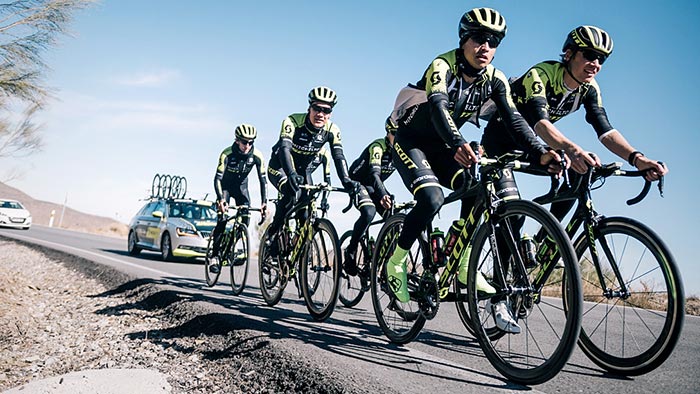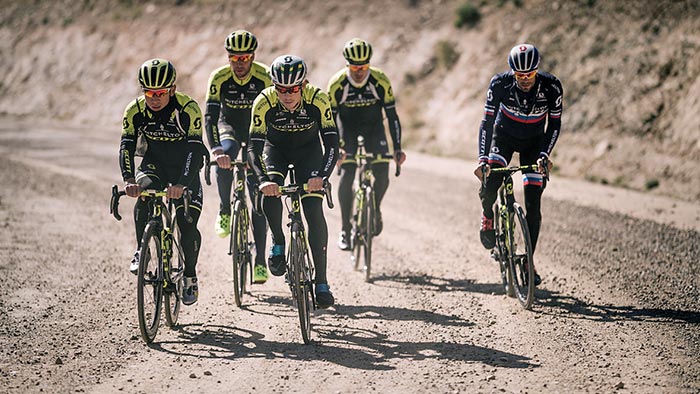LT: First of all, congrats to Simon [Yates] on a hard-fought Giro. How have you changed the Yates brothers’ training goals (if at all) as they’ve aged out of young rider classification?
Mitchelton Scott Coaching Staff: Like most parts of young rider development, both training and racing goals develop and progress along with the rider. As the riders mature, become stronger and have a better understanding of how hard they can push themselves the goals within training and racing develop. The determination and willingness to do the required work has certainly helped both Yates brothers develop quickly.
LT: Is there anything young riders should know about elite-level training as they mature?
MS: Greg LeMond summed it up well – “It never gets easier, you just go faster.”
LT: Has the inclusion of significant cobbles and a TTT in this year’s tour changed your team selection process or early season training?
DS Matt White: The route certainly has everything and it’s really a race in two. The first nine days, depending of the weather, has the potential to be a really stressful time. The team time trial can always see gaps of up to two or three minutes between some of the best teams, and a lot of the climbers have never done anything like they are going to experience on stage nine. It’s a mini Paris-Roubaix – we’ve used cobbles before but never this many kilometers – and it really has the potential to turn the Tour upside down.
The team we are looking to take will be quite a diverse team. Potentially, the first nine days of the race will be the most stressful part of the race and a lot of guys will actually find themselves off the general classification before we actually climb a hill.
LT: Which TrainingPeaks metrics do you focus on most at the tour—how do you recalibrate when you know everything’s going to go off the charts?
MS: The metric depends on the specific circumstance and this can change day to day.
The TrainingPeaks platform allows us to monitor and track a range of variables which help us better understand rider performance. These include simple metrics like time accumulated in different zones to more complex metrics like TSS as well as a number of physiological variables like Body Mass, Heart Rate Variability and Urine Specific Gravity. All of these metrics are easily logged, viewed and analyzed in the TrainingPeaks platform and help guide decision making throughout the race.
Depending on the specific race situation or question being asked, helpful TrainingPeaks metrics include measures of Mechanical Work / Energy Expenditure, which help guide diet and refuelling strategies day to day. Relationships between power and heart rate (Pwr:HR and EF) can be used to help understand how a rider is handling the load/fatigue. Normalised Power, Variability Index and Peak Powers for various durations can be used to help understand the specific race requirements and in combination with VAM and climbing W/kg, comparisons can be made to other riders and race performances.
LT: Which stages are you most excited for this year? (Or is that a secret?)
MW: I am really excited about stage 17, the shortest stage of the TDF at 65km. It’s basically 3 passes and that’s it. It will be very entertaining and you are just praying your riders are on a good day because a lot can be gained or lost on this short brutal stage.
Find out how the other teams train, and see files from the 2018 Tour de France here!





